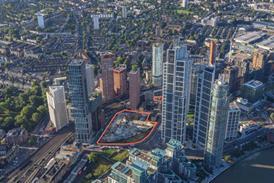- Home
- Intelligence for Architects
- Subscribe
- Jobs
- Events

2025 events calendar Explore now 
Keep up to date
Find out more
- Programmes
- CPD
- More from navigation items
Work on first new towns to ‘start within four years’ says Pennycook as 100 proposals submitted

Matthew Pennycook says new towns to contribute to government’s 1.5 million-homes housing target
Construction work on the government’s new towns programme will start within the next four years, housing minister Matthew Pennycook has said.
Pennycook told BBC Radio 4’s Today programme this morning that he expected plans for the first wave of new town projects to “make a contribution to housing numbers in this Parliament”.
…
This content is available to registered users | Already registered?Login here
You are not currently logged in.
To continue reading this story, sign up for free guest access
Existing Subscriber? LOGIN
REGISTER for free access on selected stories and sign up for email alerts. You get:
- Up to the minute architecture news from around the UK
- Breaking, daily and weekly e-newsletters
Subscribe to Building Design and you will benefit from:

- Unlimited news
- Reviews of the latest buildings from all corners of the world
- Technical studies
- Full access to all our online archives
- PLUS you will receive a digital copy of WA100 worth over £45
Subscribe now for unlimited access.






